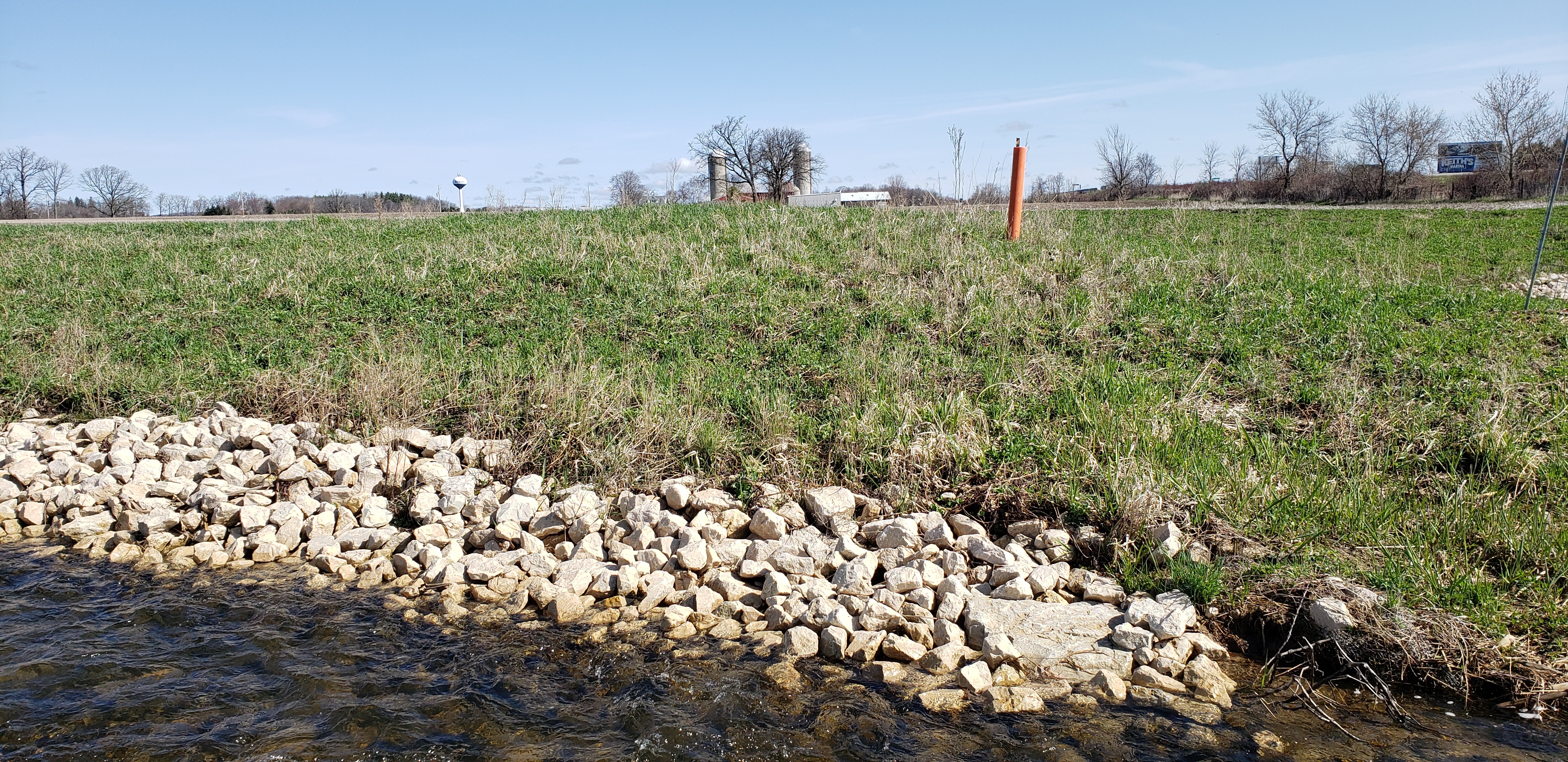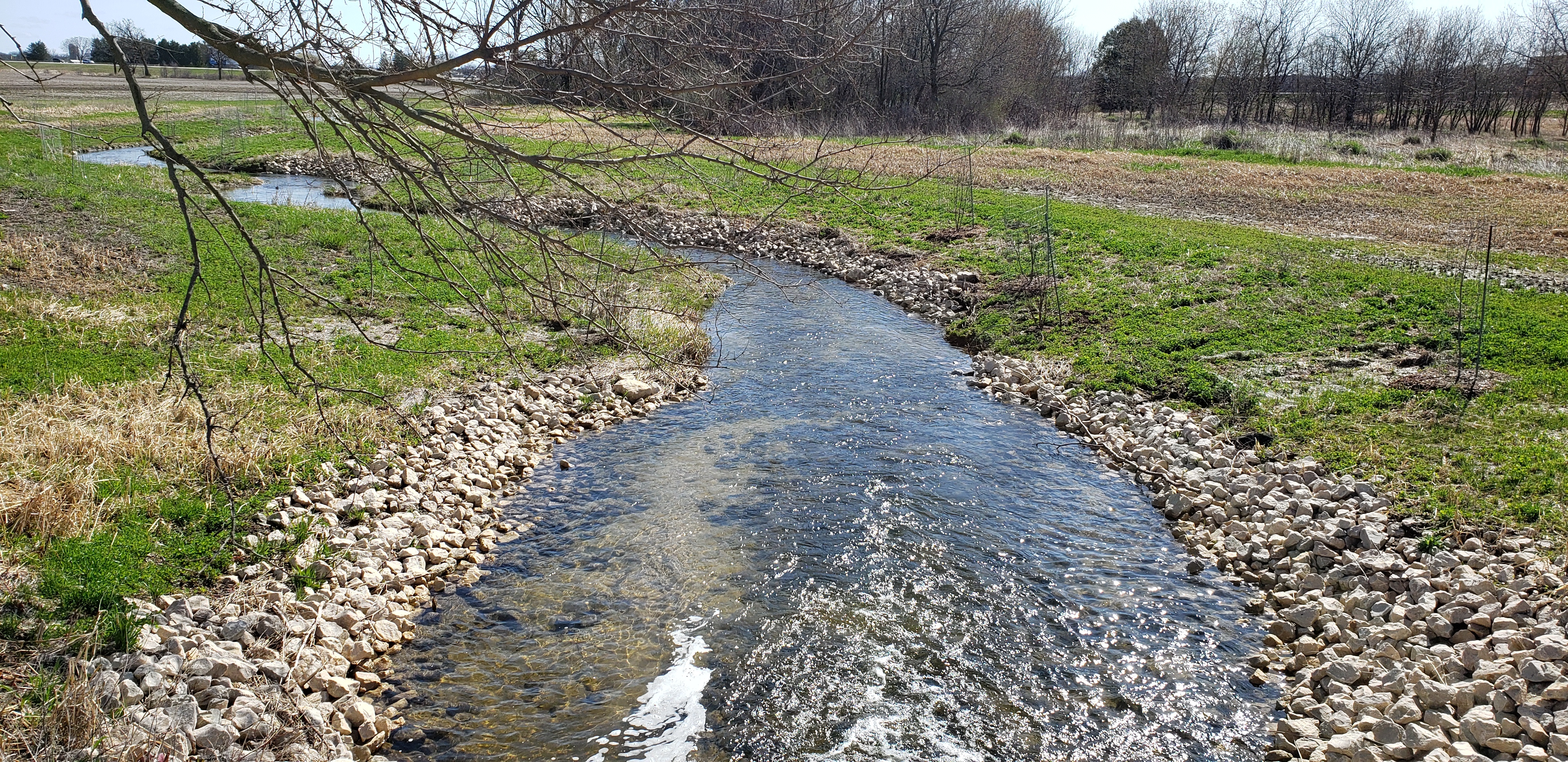Washington County is not known for its trout streams, with only one stream being listed on the DNR’s trout stream map. Now, a nearly five-mile long stream called Polk Springs has the potential to double that number. This spring-fed stream has water temperatures that are adequate for trout to live in, but runoff from nearby farms prevented any chance of the trout returning to the stream.
Over the last 25 years, Washington County Land Resources Division has partnered with the farmers along Polk Springs on a variety of projects to improve manure management and reduce runoff. The farmers developed nutrient management plans, abandoned unused manure storage, and addressed sources of runoff from barnyards. Additional projects established grassed waterways and buffers on the stream.
Even with these successful projects, Washington County Conservation Specialist Paul Backhaus says one big goal for their office was repairing the streambank erosion that was putting about 132 tons of sediment into Polk Springs every year. “The landowners along the stream understood the problem but they had a hard time justifying the large expense of fixing the stream,” said Paul Backhaus. “Eventually, we realized the only way this project would ever be completed was to find a way to cover 100% of the project costs.”
Fortunately, Washington County had access to a newer source of grant funds with the Fund for Lake Michigan, and when combined with an USDA-NRCS Environmental Quality Incentive Program grant, could cover all of the project costs. With the potential to fully cover all of the project’s costs, Washington County reached out to the landowners along the stream and asked them partner on the project. This partnership included four landowners and restored more than 2,300 feet of stream.
With the landowners on board, Washington County worked with their local DATCP engineering staff to inventory the project area and develop a design to repair the erosion. At the same time, they worked with DNR fish and stream biologists to inventory the stream and provide input on how to improve the stream for fish habitat. At the end of the DNR’s inventory, it was determined that the stream could sustain a population of brown trout. The final design included sloping the undercut banks so they could be planted with grass and placing rock rip-rap on the stream bends that are more susceptible to erosion. Part of the project also required the removal of a combination of dead ash trees and box elders to allow for access to the project area. At the request of one of the landowners, Washington County worked with a local nursery to develop a restoration plan to plant native trees and shrubs that thrive along streams

Over the course of two summers and countless trips to the project site by Washington County and DATCP staff, the contractor removed the trees, shaped the banks, placed the rip-rap, planted seeds, and installed erosion matting. “As the seed came out of the ground, you could see the transformation of a stream that had collapsing banks into a park-like setting that people and wildlife can access and enjoy,” said Backhaus. Over time, this area along the stream will continue to improve both in appeal and function as the native trees and shrubs continue to flourish and grow.

Sometimes good conservation takes time, and in the case of Polk Springs, it has taken more than 25 years. “There is still plenty of work to be completed on Polk Springs,” said Backhaus. “But, we passed a major milestone in 2021 by reducing the 132 tons of sediment entering the stream every year.”
Wisconsin Report on Soil & Water Conservation
This story first appeared in the DATCP Wisconsin Report on Soil and Water Conservation, which highlights the conservation projects and successes of our county members.
